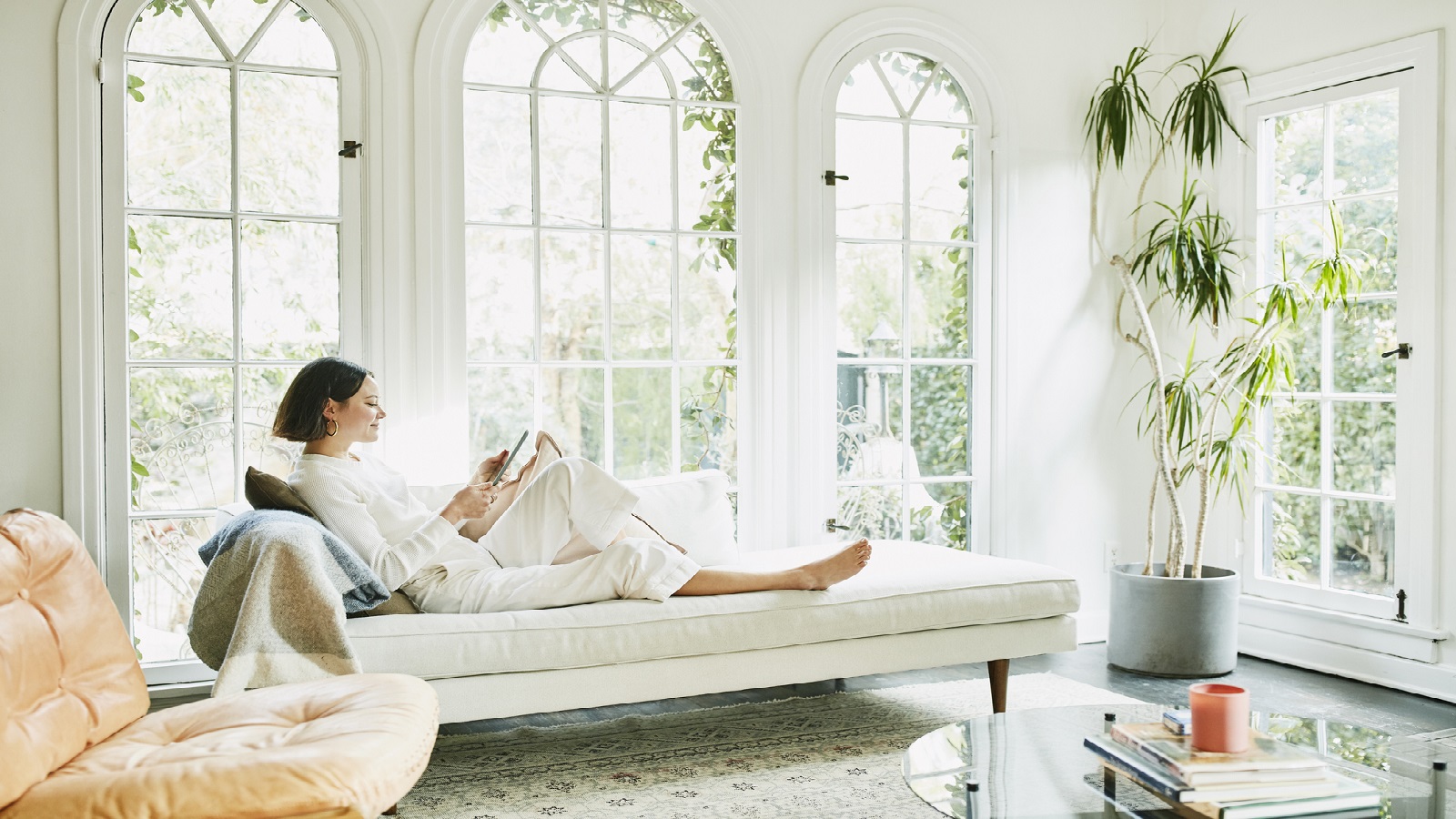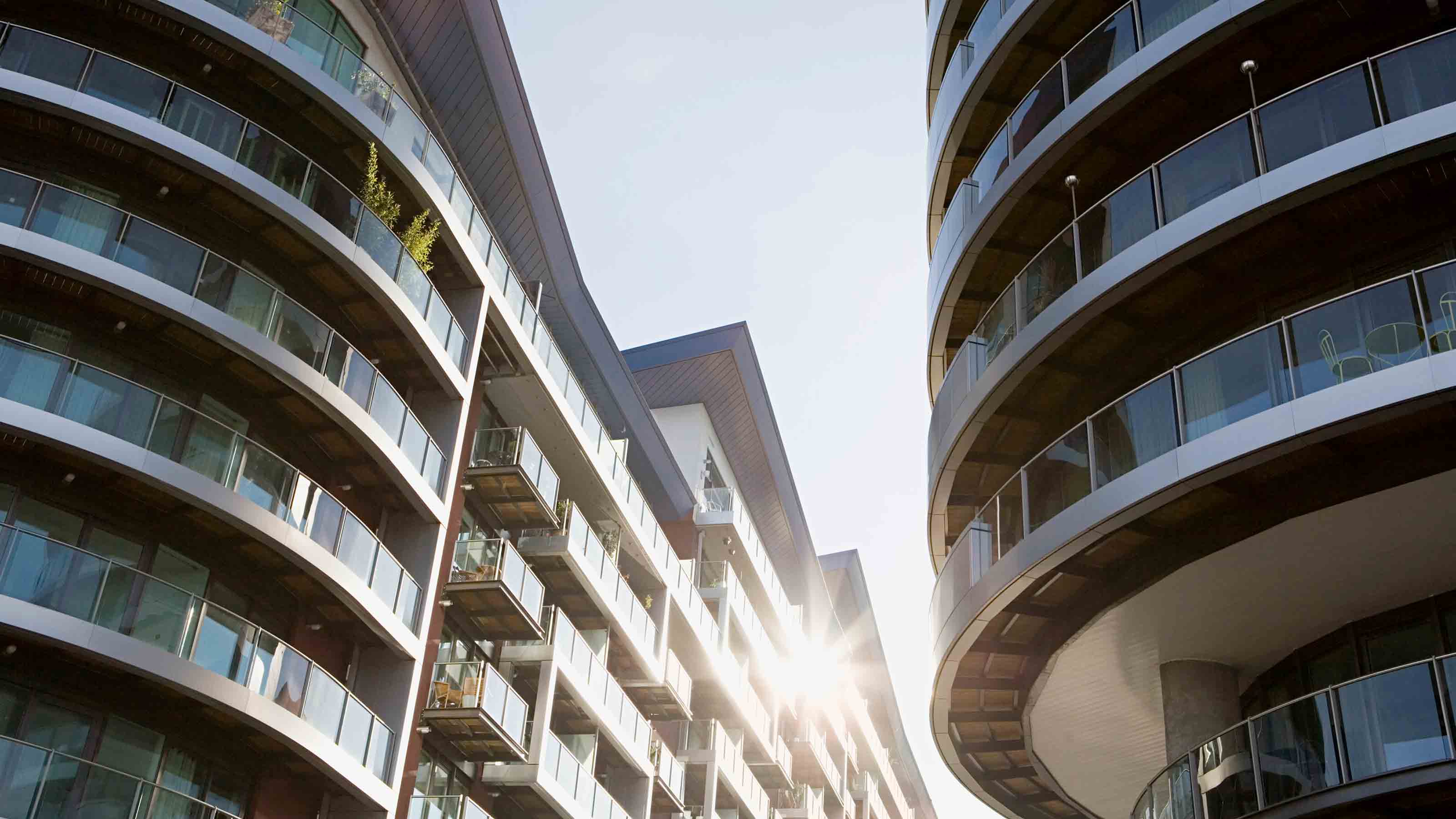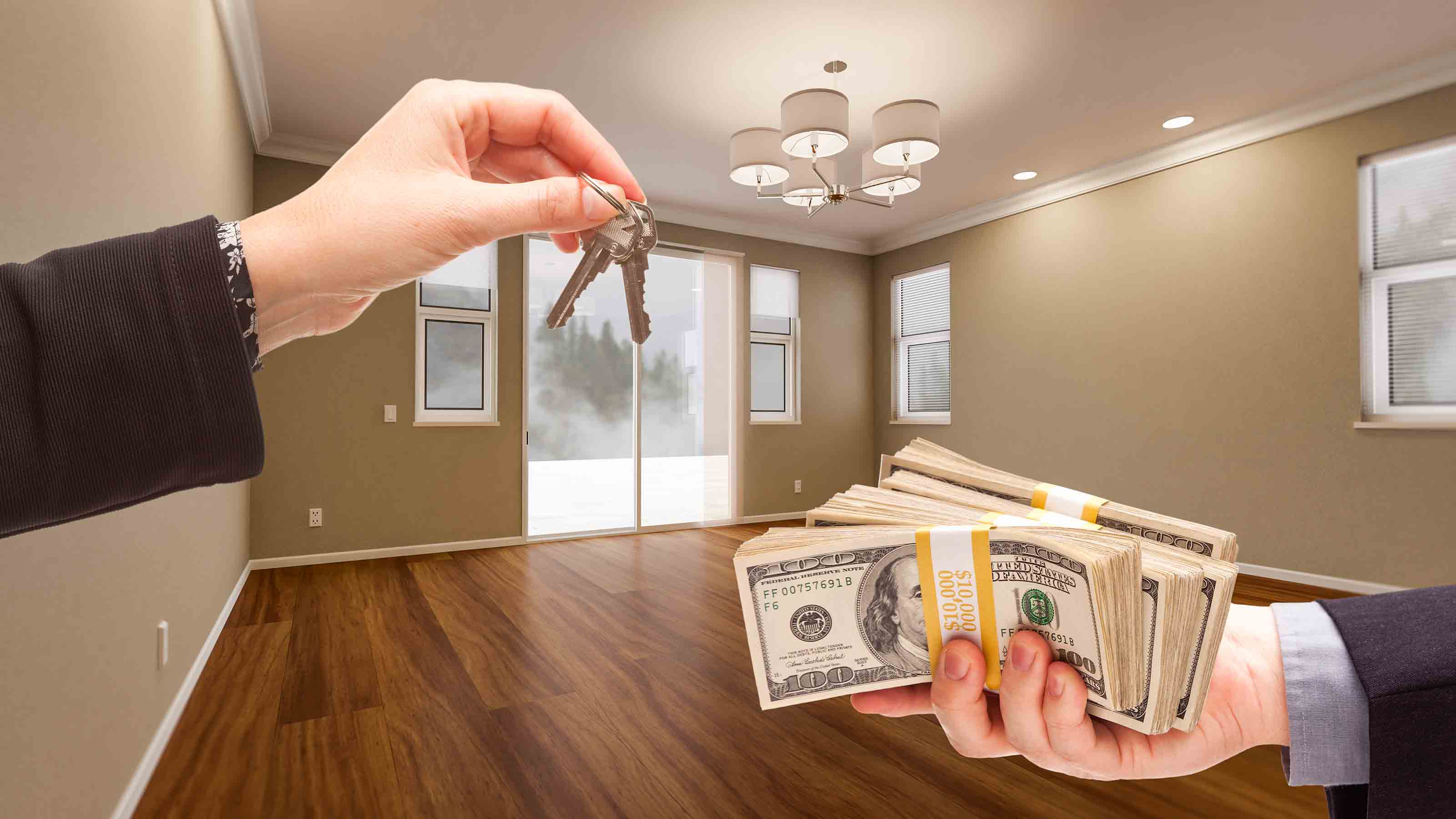Remodeling That Pays Back
In a slumping market, you need to cherry-pick your projects.

As the housing market has veered off course, so have many homeowners' remodeling plans. Retreating home prices and higher interest rates have made it tougher to borrow against home equity. Uncertainty about when the market will hit bottom has left many hesitant to spend money they may not recoup.But those factors could also make this a perfect time to remodel.
| Row 0 - Cell 0 | SLIDE SHOW:Home Upgrades That Pay |
| Row 1 - Cell 0 | SLIDE SHOW:Before & After Kitchen Remodels |
| Row 2 - Cell 0 | SLIDE SHOW:Affordable Room Makeovers |
| Row 3 - Cell 0 | More Home Slide Shows:Home Designs You May Have Missed |
Contractors who once had backlogs of a year or more now find themselves with only a few projects in the pipeline. Subcontractors, facing a slowdown in new-home construction, are looking for remodeling jobs. "You have a better shot at getting someone experienced, and you can be a little more aggressive in scheduling the project," says Kermit Baker, director of the Remodeling Futures Program at Harvard's Joint Center for Housing Studies.
You may not pay a lot less because the price of materials and labor isn't coming down, says Bob Peterson, president of Associates in Building & Design, in Fort Collins, Colo. "But the cost of remodeling may never be cheaper."

Sign up for Kiplinger’s Free E-Newsletters
Profit and prosper with the best of expert advice on investing, taxes, retirement, personal finance and more - straight to your e-mail.
Profit and prosper with the best of expert advice - straight to your e-mail.
A Competitive Edge
Will you get your money back when you sell? That depends. Remodeling magazine's "2007 Cost vs. Value Report" suggests that with the right project, your returns can be substantial. National averages show that homeowners recouped 70% to 80% of the cost of most projects in 2007 -- down about ten percentage points from 2005. Remodeling says that represents a return to normal levels after the housing-boom years.
You'll usually recoup more of the cost of a midrange version of a remodeling project than an upscale version (see the table on page 89). Rebuilt kitchens and bathrooms show the most promise for good returns. And current trends suggest that bigger is better. Remodelers are knocking down walls to replace little-used formal dining rooms and guest rooms with expanded kitchens and bathrooms. With the increase in room size come larger, professional-grade appliances in the kitchen and bigger showers and tubs in the bathroom.
But don't overimprove. If you add high-end materials to a midprice home, you probably won't get back as much of your cost. Replacement projects -- windows, siding and roofs -- tend to have the highest returns of all.
Staying put for a few years will increase your chances of covering your costs. But even if you don't get all your money back, the improvements are likely to tip buyers in your direction while the market recovers. That's what Julienne Stathis is hoping. As a military wife who has moved three times in the past ten years, she put resale value at the top of her priority list when buying.
After she and her husband, Drew, bought their Springfield, Va., home in 2001, they undertook a series of updates to increase its value. A wood floor replaced the carpet on the first floor, and tile replaced vinyl flooring in the kitchen and laundry rooms. The Stathises bought all-new kitchen appliances, finished the basement and had professional landscaping done.
Their most recent project is a bathroom redo. The updated bath features a Jacuzzi, a shower with recessed body sprays, cherry cabinets with granite countertops and new fixtures all around.
The project total came to $37,500. The family is planning to move again soon, and Julienne is optimistic that the new bath and other improvements will give their home a competitive edge. "I'd rather put my money into the house instead of clothes or cars," she says. "We will get the return when we sell, and in the meantime my family enjoys our house every single day."
Your Kitchen
If your kitchen is still functional but has an outdated feel, a few cosmetic changes can give it a new look. The best way to start is with a fresh coat of paint. You can also add a decorative backsplash. Depending on the tile you choose, the cost will range from about $500 to $1,500.
Just up the price scale are new knobs and pulls for your cabinet doors and drawers. Kitchen hardware runs from about $3 apiece to $40 apiece for handmade items, but $10 is a good price to target. In an average-size kitchen, knobs and pulls should cost about $1,200 to $1,500, including installation.
Last on the list of little things is lighting. If your kitchen dates to the '70s or '80s, chances are you have one main fixture -- and it's fluorescent. Replacing the main fixture usually runs $200 to $300 including installa-tion. But if you upgrade to recessed lighting and have to tear into ceilings, the cost rises dramatically. Recessed lights run $25 to $40 each and cost $150 per light to install. Tim Sweeney, of Sweeney Construction Corp., in Madison, Wis., says he often adds task lighting and accent lighting, such as under-cabinet fixtures.
Cabinets. If your kitchen is kaput, revamp the cabinets first because they are the most prominent element. You can refinish your current cabinets or reface them -- that is, put on new doors and drawer fronts and re-cover the frames with plywood stained or painted to match. Both of these projects can run into some serious money. Simply painting primed cabinets can cost $4,000 to $6,000. Refacing costs depend on the type of wood you choose (oak is the least expensive; maple and cherry come next) but can run from $6,000 to $15,000. New cabinets will cost a few thousand dollars to more than $30,000, depending on the type of wood and level of custom fit.
Countertops. Laminates have improved in quality over the years and run $25 to $50 per linear foot. But more people choose granite, natural stone or Silestone, a manufactured stone made from quartz and resin that ranges from $50 to $125 per linear foot. (Pricing includes installation but not charges for cutouts, such as sinks.) Kimberly Sweet, editor of Kitchens.com, notes that although granite is still popular, custom materials, such as recycled glass and concrete, are showing up in high-end homes.
Sinks. When you get a new countertop, it's a good time to replace your sink and faucet. Under-mount sinks are elegant and practical -- they offer clean lines and, because there's no lip to meet the counter, spills easily wipe into the basin. Most popular are heavy-gauge stainless-steel and cast-iron sinks, which cost about $1,000. The current trend in faucets is higher-arced spouts and single spouts with pullout sprays. Although about $200 will buy a good-quality model, prices ratchet up quickly; $1,000 for a luxury brand with all-stainless construction isn't uncommon.
[page break]
A Better Bath
For a top-to-bottom makeover, expect to spend at least $15,000, but the price can soar as you add upscale elements. Sweeney says that outlays for waterproofing and plumbing can often cause the bathroom to cost more per square foot than the kitchen.
For a modest redo, a fresh coat of paint and new hardware go a long way toward changing the look of your bathroom. Coordinated hardware sets -- towel bars, hooks, tissue holders and built-in soap and toothbrush holders -- range from $25 to $150 per piece. Light bars run $75 to $150, on average.
Installing new tile flooring or tile accents is another way to refresh without spending a mint. Designer Jessica Cannon, of Expo Design Center in Fairfax, Va., recommends natural stone for its artistic qualities. Natural-stone tile runs $15 to $18 per square foot including installation, versus $12 to $15 for porcelain or ceramic tile. For accent, glass tiles and mosaics create a dramatic look, but both the materials and installation are pricey. Tile and mosaic sheets run $25 to $50 per square foot, and installation adds another $15 per square foot.
| Row 0 - Cell 0 | SLIDE SHOW:Home Upgrades That Pay |
| Row 1 - Cell 0 | SLIDE SHOW:Before & After Kitchen Remodels |
| Row 2 - Cell 0 | SLIDE SHOW:Affordable Room Makeovers |
| Row 3 - Cell 0 | More Home Slide Shows:Home Designs You May Have Missed |
Cabinets and sinks. Often all you need to transform dull cabinetry is trim and detail work, says Paul Zuch, president of Capital Improvements, in Allen, Tex. Costs per linear foot for traditional-looking cabinets and countertops are similar to those in the kitchen. More people are moving away from the traditional, though, and replacing built-in cabinets with furniture-like pieces. Vanities range from $1,000 to $3,000 and may include a sink -- either under-mounted or as a vessel bowl, which sits on top of the counter. Increasingly, vanity sets are being made with his-and-her sinks. Bathroom sinks may run $500 or more. Sinks are often included in a vanity set, but faucets typically are not. Faucets range from a few hundred dollars to more than $1,000, depending on the materials and quality. Installation of a new sink and faucet plus removal of the old costs about $700.
Toilet and tub. Toilets are an easy replacement because they fit over the existing plumbing. Builder-grade models run $200 to $300, while more-decorative models cost $500 to $600. You can buy a high-efficiency model that uses 1.3 gallons or less per flush for less than $400. Removing the old and installing the new costs about $300. Replacing your tub will be a more expensive job, with prices ranging from $350 to $1,000 just for the tub and $550 for removal and installation.
Replacements
Replacements are boorish cousins to sleek remodels, but replacements are more likely to return your money when you sell.
Windows. Framing material makes the greatest difference in the cost of replacement windows. Your choices, from least to most expensive, are aluminum, vinyl and wood. Sweeney gives vinyl windows the value stamp because they require no staining or sealing and fit easily into existing frames. They are also more energy-efficient than aluminum windows. For a typical house, vinyl windows would cost $10,000 to $14,000, and wood windows would cost $11,000 to $18,000. Wood windows require more work to install because you have to remove the whole frame and replace interior and exterior trim. Regardless of which type you choose, Sweeney and Zuch recommend the Marvin, Pella and Andersen brands.
Windows that have two layers of glass are best, ideally with argon gas between the layers. Look for a low "U factor" (the rate at which heat passes through a window) whether you live in North Dakota and want to keep the heat inside or in Mississippi and want it to stay outside. A low emissivity ("low e") coating can help lower the U factor still further by slowing the rate of heat passing through.
Siding. Only two forms of siding get high marks for value. Vinyl is among the least-expensive products out there, but it will last 20 years or more and is easy to install. Plus, today's vinyl is attractive, and droves of people are selecting it, says Sweeney. An average, midrange vinyl-siding replacement job runs about $10,000 for materials and installation; a more upscale, foam-backed vinyl runs about $12,000.
Fiber-cement siding is more expensive, but it lasts twice as long. James Hardie, the leading manufacturer, has a 50-year warranty on its siding, which can handle anything Mother Nature throws its way. It's available in different colors and textures, even mimicking other types of siding, such as cedar shake or wood. Fiber-cement siding costs about $13,000 for a typical home.
Roofing. Sid Davis, author of Home Makeovers That Sell, says that curling or discoloring shingles, or shingles that are losing the mineral coating that protects your home, are a sign it may be time to replace your roof. Dimensional shingles, made with pieces of shingle laminated together for thickness and texture, are tops for durability and aesthetics. Whereas a good three-in-one shingle should last 20 years, dimensional shingles will last 30 to 50 years and are more resistant to the elements. They also have color gradations to give your roof a pleasing look. Average costs range from $12,000 to $15,000.
[page break]
Get Kiplinger Today newsletter — free
Profit and prosper with the best of Kiplinger's advice on investing, taxes, retirement, personal finance and much more. Delivered daily. Enter your email in the box and click Sign Me Up.

-
 Planning for Health Care Costs in Retirement: A Comprehensive Guide
Planning for Health Care Costs in Retirement: A Comprehensive GuideMedical expenses aren't slowing down, and if you're not prepared, they can hit you like a ton of bricks.
By Bob Chitrathorn
-
 When Should You Hand Over the Keys — to Your Investments?
When Should You Hand Over the Keys — to Your Investments?The secret to retirement planning? "The best time to hand over the keys is before you’ve realized you need to hand over the keys."
By Maurie Backman
-
 How to Search For Foreclosures Near You: Best Websites for Listings
How to Search For Foreclosures Near You: Best Websites for ListingsMaking Your Money Last Searching for a foreclosed home? These top-rated foreclosure websites — including free, paid and government options — can help you find listings near you.
By Bob Niedt
-
 Luxury Home Prices Rise as the Rich Dodge High Mortgage Rates
Luxury Home Prices Rise as the Rich Dodge High Mortgage RatesLuxury home prices rose 9% to the highest third-quarter level on record, Redfin reports, growing nearly three times faster than non-luxury prices.
By Kathryn Pomroy
-
 Four Tips for Renting Out Your Home on Airbnb
Four Tips for Renting Out Your Home on Airbnbreal estate Here's what you should know before listing your home on Airbnb.
By Miriam Cross
-
 Five Ways to Shop for a Low Mortgage Rate
Five Ways to Shop for a Low Mortgage RateBecoming a Homeowner Mortgage rates are high this year, but you can still find an affordable loan with these tips.
By Daniel Bortz
-
 Looking to Relocate? Plan for Climate Change
Looking to Relocate? Plan for Climate Changebuying a home Extreme weather events are on the rise. If you’re moving, make sure your new home is protected from climate change disasters.
By Rivan V. Stinson
-
 Retirees, A Healthy Condo Has a Flush Reserve Fund
Retirees, A Healthy Condo Has a Flush Reserve FundSmart Buying Reserve funds for a third of homeowner and condo associations have insufficient cash, experts say. Here are some cautionary steps you should take.
By Patricia Mertz Esswein
-
 Cash Home Buyers: New Services Offer Help Making All-Cash Offers
Cash Home Buyers: New Services Offer Help Making All-Cash OffersBecoming a Homeowner Some firms help home buyers make all-cash offers on homes. Weigh the fees before you sign on.
By Emma Patch
-
 Home Sale Prices in the 50 Largest Metro Areas
Home Sale Prices in the 50 Largest Metro AreasBecoming a Homeowner What’s happening in the market where you live?
By the editors of Kiplinger's Personal Finance